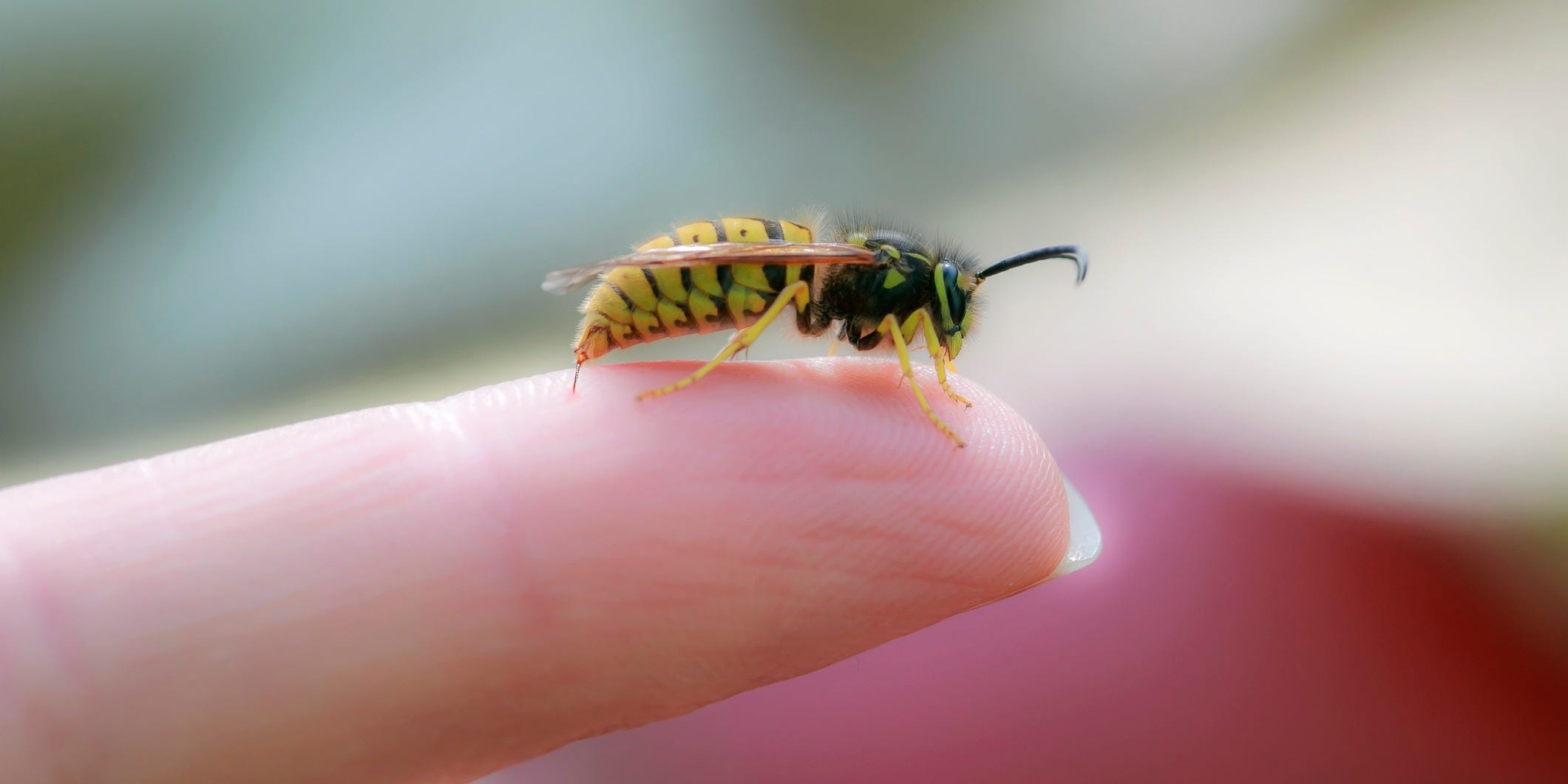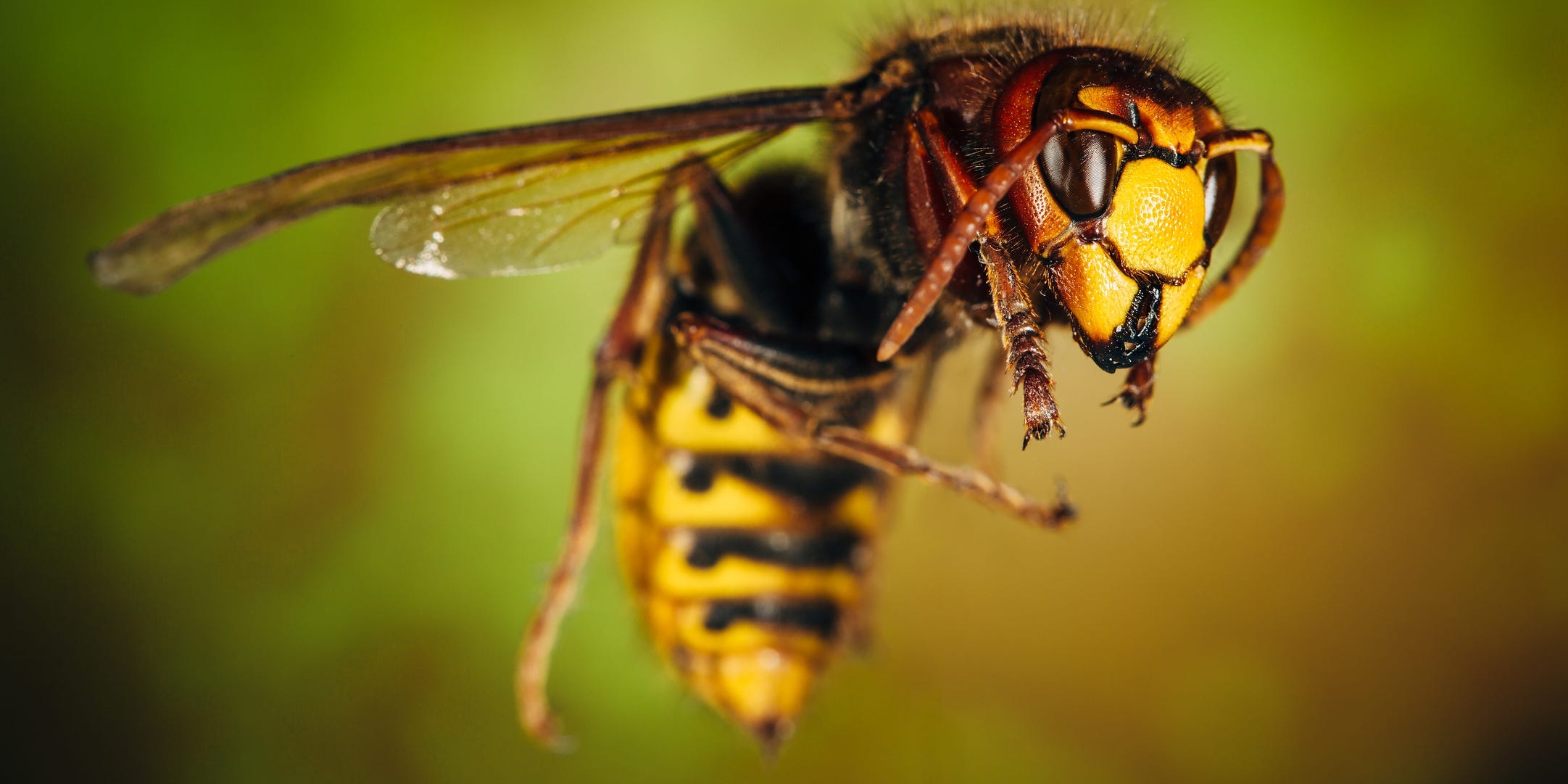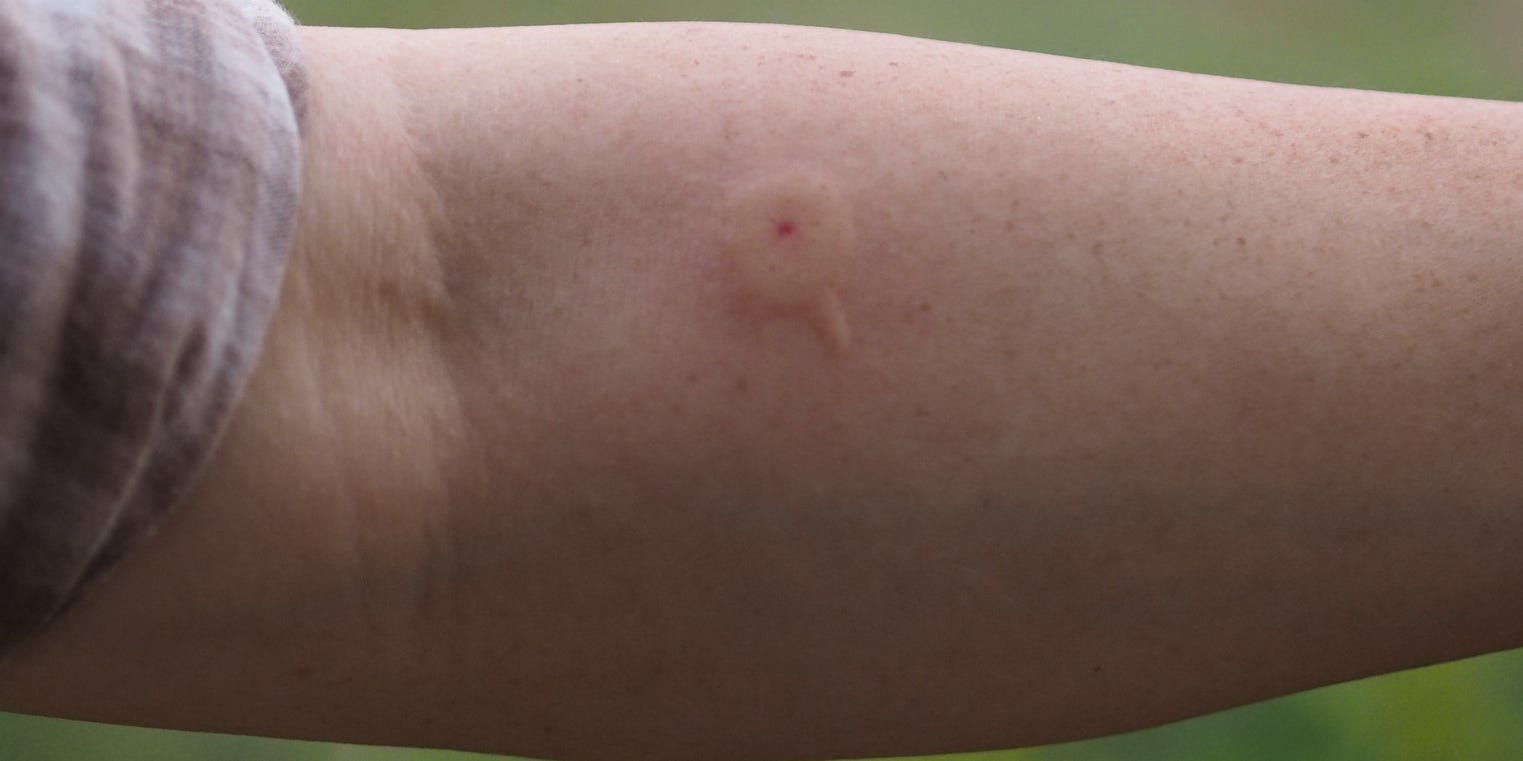
Nataba/Getty Images
- To treat a wasp sting, you'll need to reduce swelling and inflammation with ice or Advil/Tylenol.
- Typical symptoms of a wasp sting include pain, redness, and warmth in and around the wound.
- Allergic reactions are rare but in some cases can be fatal so be aware of any severe symptoms.
- Visit Insider's Health Reference library for more advice.
Stinging insects, like bees and wasps, can be a nuisance during the warmer months, when they are most active. While a sting from any insect can be painful, wasps are especially notorious.
That's because wasps are aggressive and can sting you many more times than, say, a bee would. Moreover, wasp stings are painful and irritating, and may even be dangerous if you have an allergic reaction.
Here's what you should know about wasp stings, how to treat them effectively, and what you can do to prevent them.
Wasps vs. bees

Credit: Frederic Cerez / EyeEm/ Getty Images
The main difference between wasps and bees is that bees are vegetarians and wasps are carnivores.
According to Keith Delaplane, PhD, Director of the Honey Bee Program at the University of Georgia, wasps feed off animal protein - which is why you might see them eyeing your hamburger at a summer barbecue.
Wasps are narrower than bees with pointed lower abdomens. Some types of bees, such as honey bees, will die after they sting, while wasps can sting more than once.
While both insects will defend their nest if threatened, wasps tend to be more aggressive and use their stinger as a weapon for hunting.
Symptoms

Credit: Penpak Ngamsathain / Getty Images
It can be hard to tell a wasp from a bee sting, Delaplane says, except for one notable marker.
If you're stung by a honey bee, it will leave its stinger in your skin, appearing as a little black dot in the sting. Wasps, on the other hand, will keep their stinger.
If a wasp stings you, you'll likely experience the following symptoms near the site:
- Redness and warmth
- Pain and swelling
- Hives
- Itchiness
The above symptoms are common and not a sign of an allergic reaction, Delaplane says.
Courtney Jackson Blair, MD, an allergist and immunologist at Privia, says people experiencing an allergic reaction to a wasp sting will have symptoms that interfere with their ABCs: airway, breathing, and circulation. For example, these symptoms could include:
- Hives or swelling that is well beyond the sting area
- Trouble breathing
- Tickling or tightness in the throat or chest
- Lightheadedness or dizziness
- Vomiting
- Fainting
Insect sting allergies are rare. And while some may only experience a mild allergic reaction, more severe reactions can be fatal. In 2017, for example, allergic reactions to insect stings killed 89 Americans, according to the Centres for Disease Control and Prevention.
If you think you are having a severe allergic reaction to an insect sting, Blair says you should call 911 or your local emergency medical services right away.
Home remedies for wasp stings
There are also several home remedies you can use to treat wasp stings:
- Mix non-seasoned meat tenderizer powder with a little bit of water. Then use a cotton ball to apply it to the sting area, and leave it on for 15 to 20 minutes. Meat tenderizer has a chemical called papain that can break down wasp venom to reduce pain and swelling.
- A paste of baking soda and a little water can also break down or neutralize the venom. as with the meat tenderizer, apply it to the sting area and leave it on for 15 to 20 minutes.
- A cool, wet tea bag can help fight inflammation and reduce swelling. Run it under cold water and apply to your skin for 15 to 20 minutes.
Insider's takeaway
Wasps can be bothersome and painful, but they're an important part of the natural ecosystem. For example, wasps pollinate flowers and prey on other insects and pests that damage crops and gardens.
The best way to prevent wasp stings is by limiting time outdoors during the day, and keeping food and drinks covered when you are outside.
When you see a wasp, do not swat it away, Delaplane says. Swatting will put the wasp in defense mode and make it more likely to sting you. If a wasp comes near you, the best thing to do is stay calm and slowly walk away.